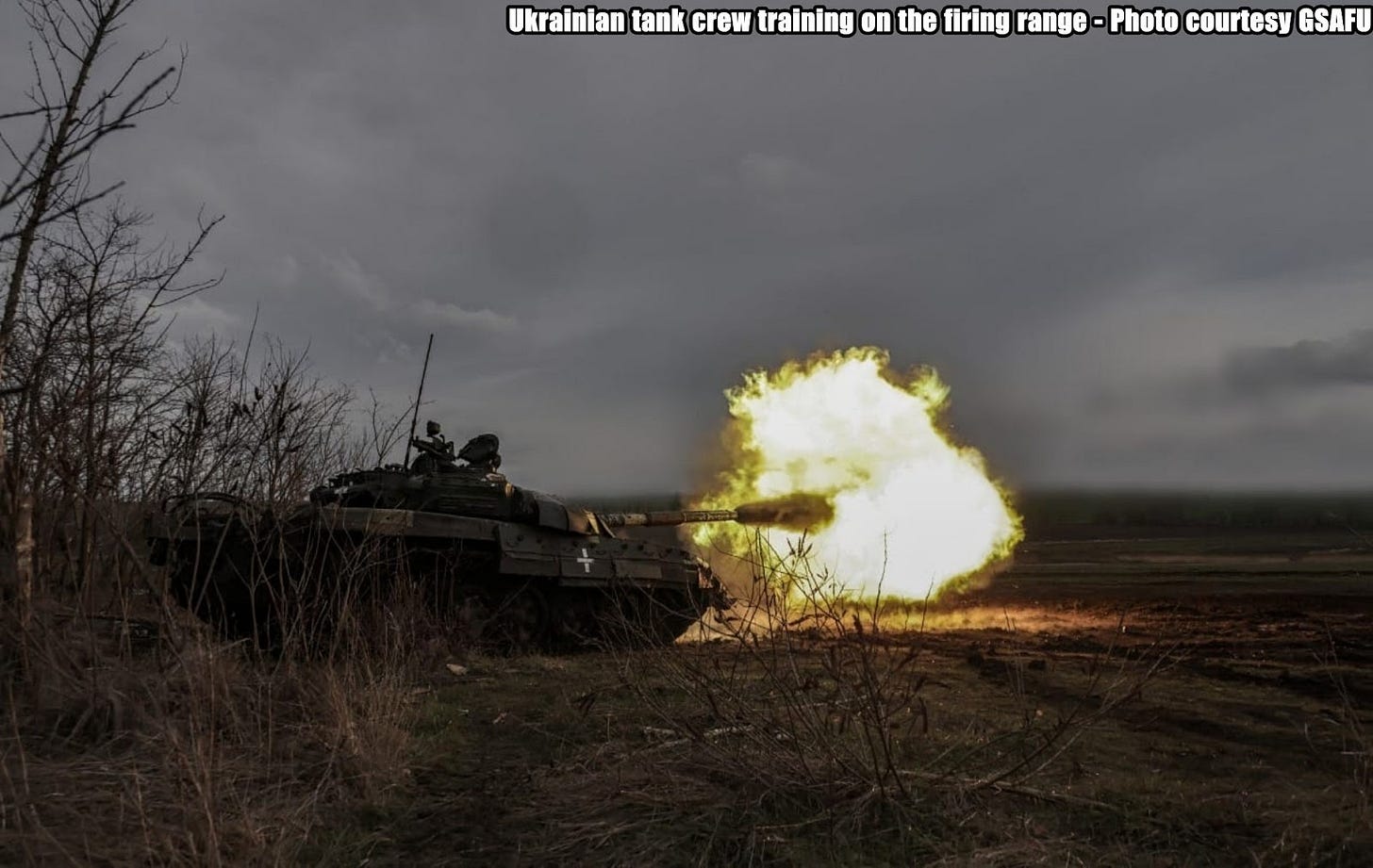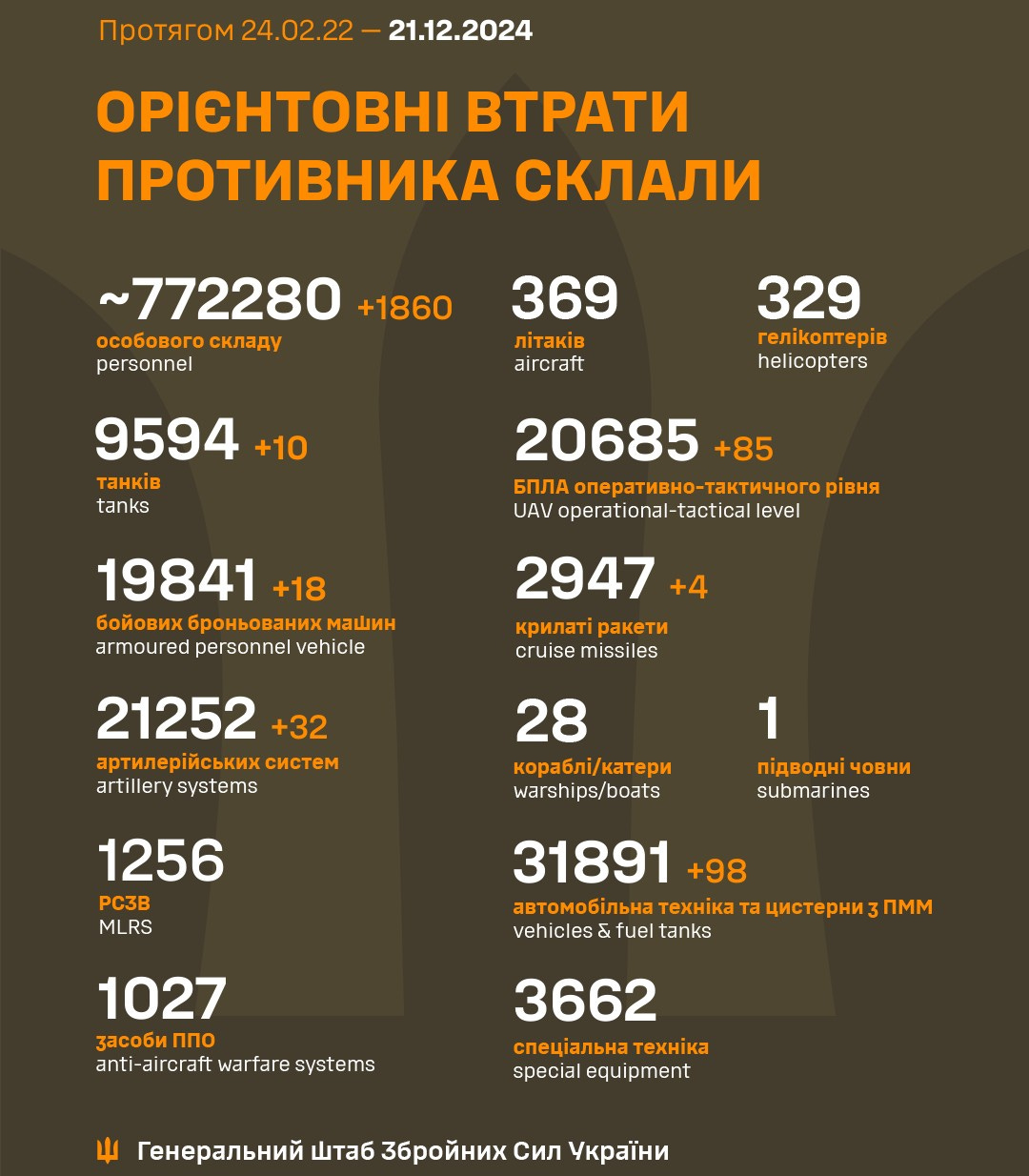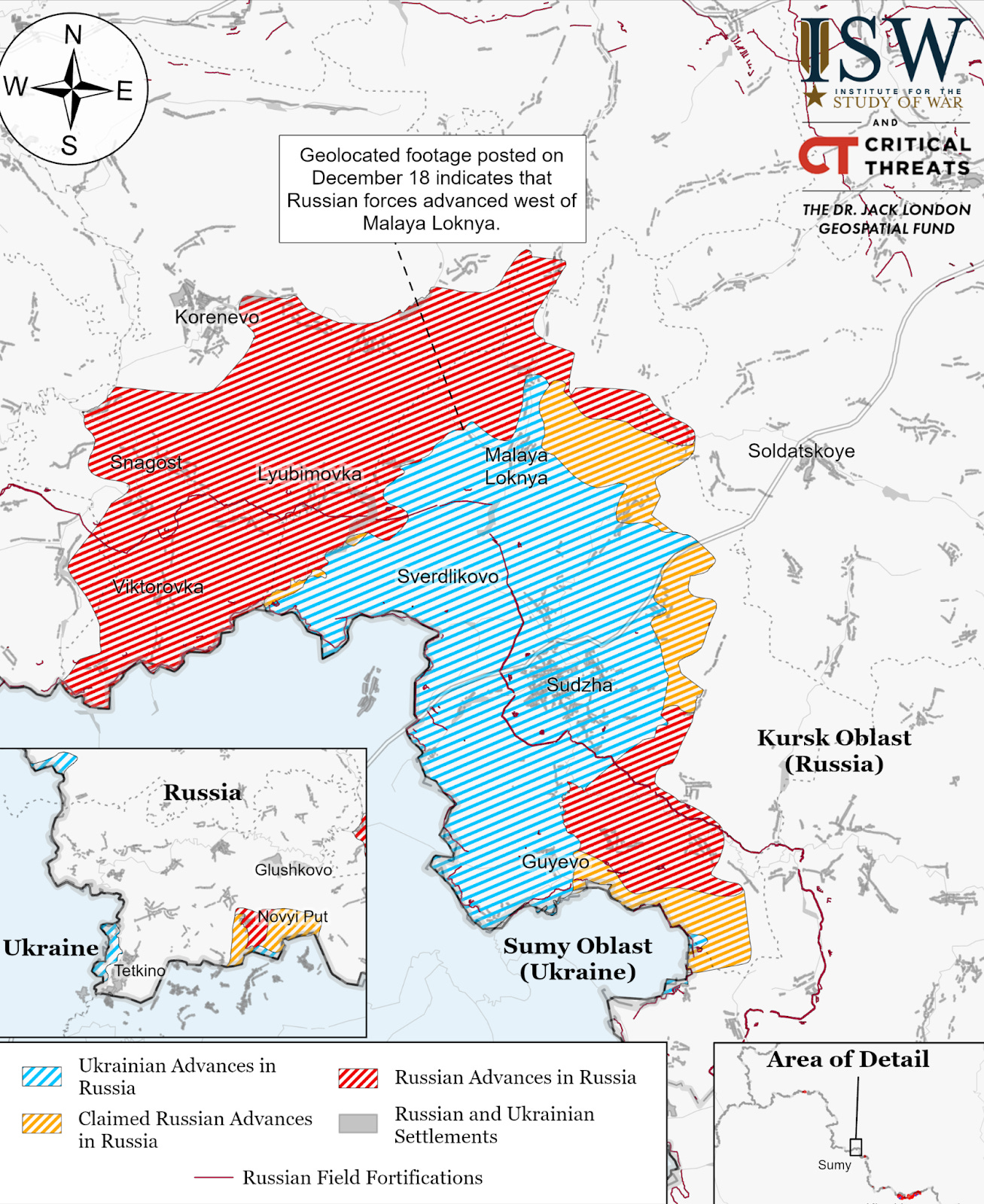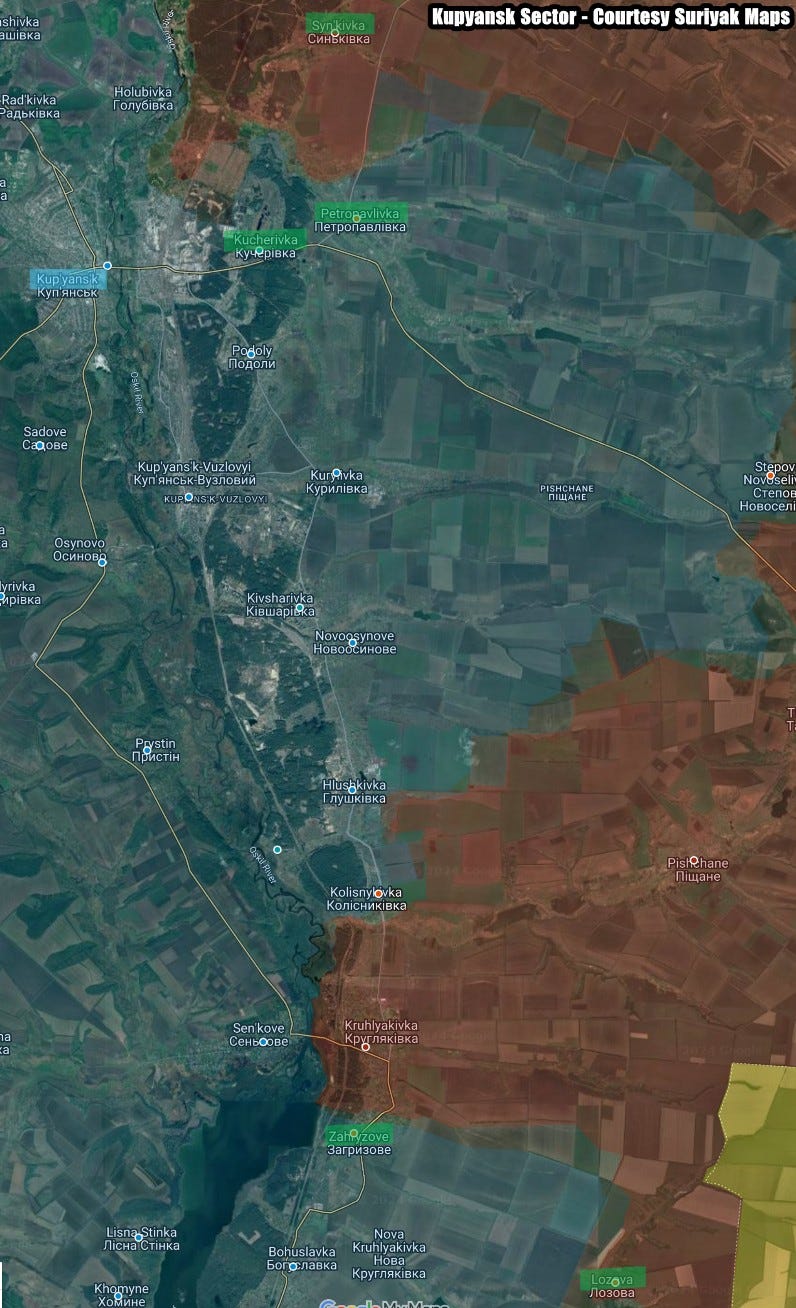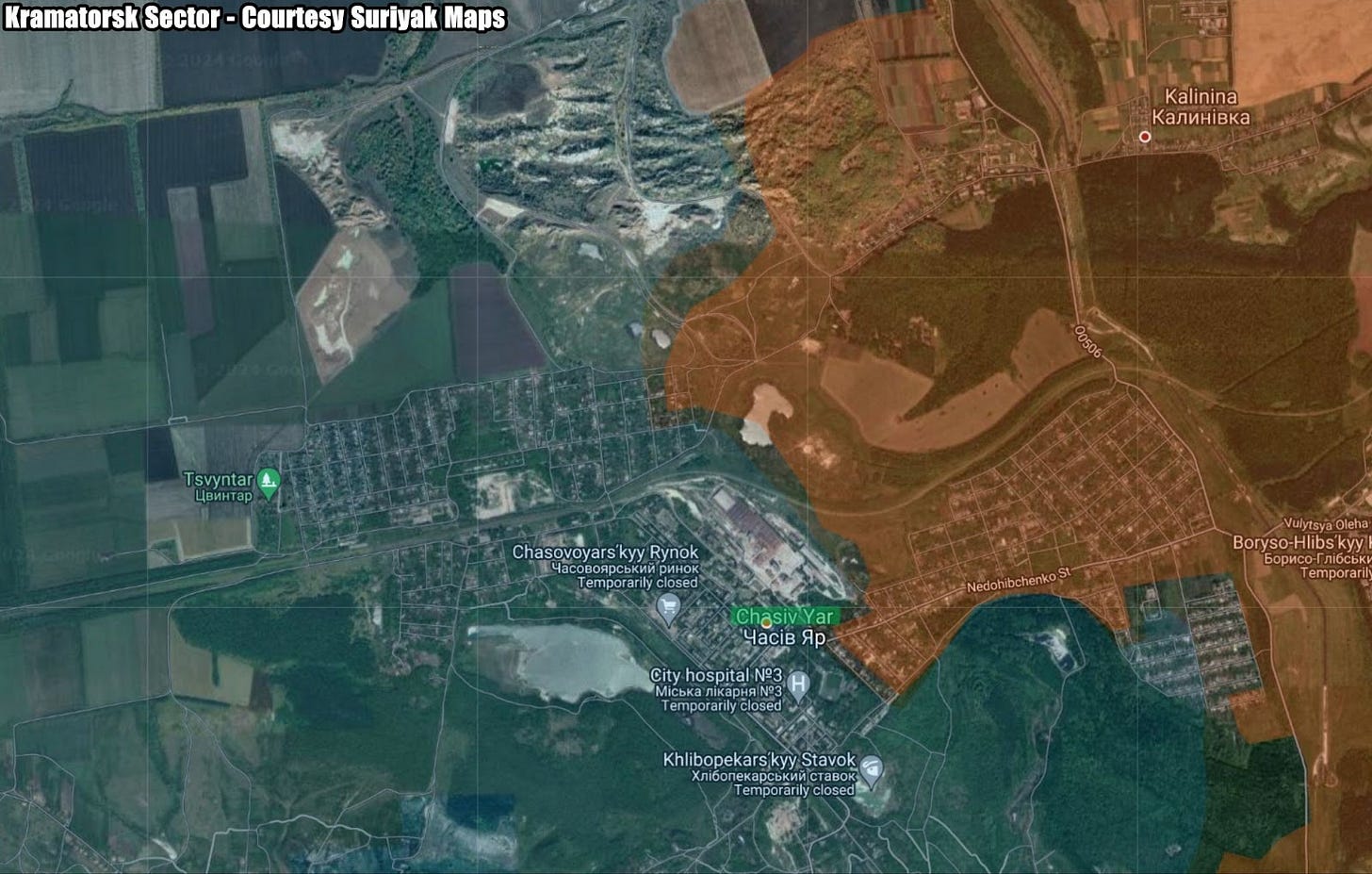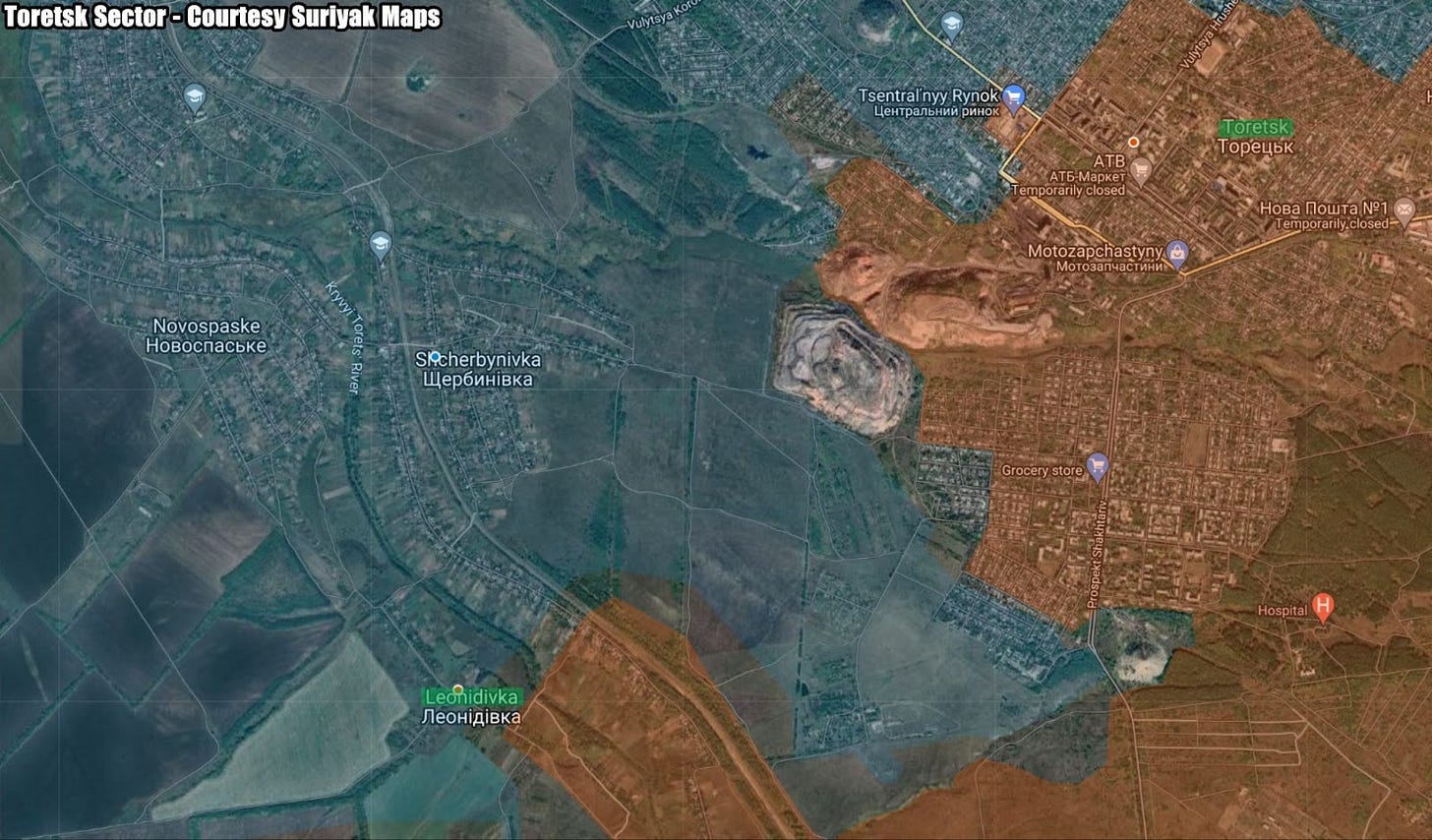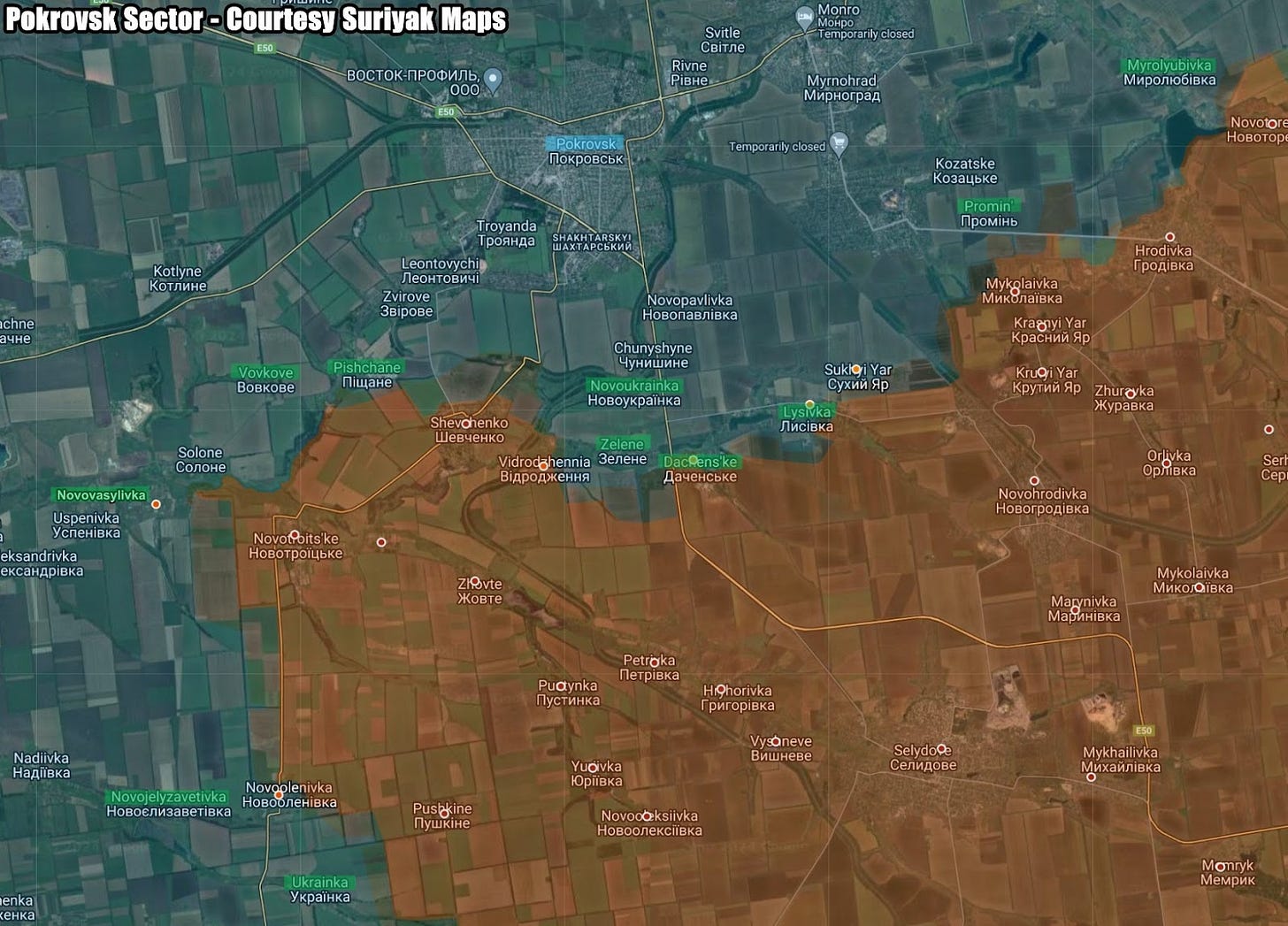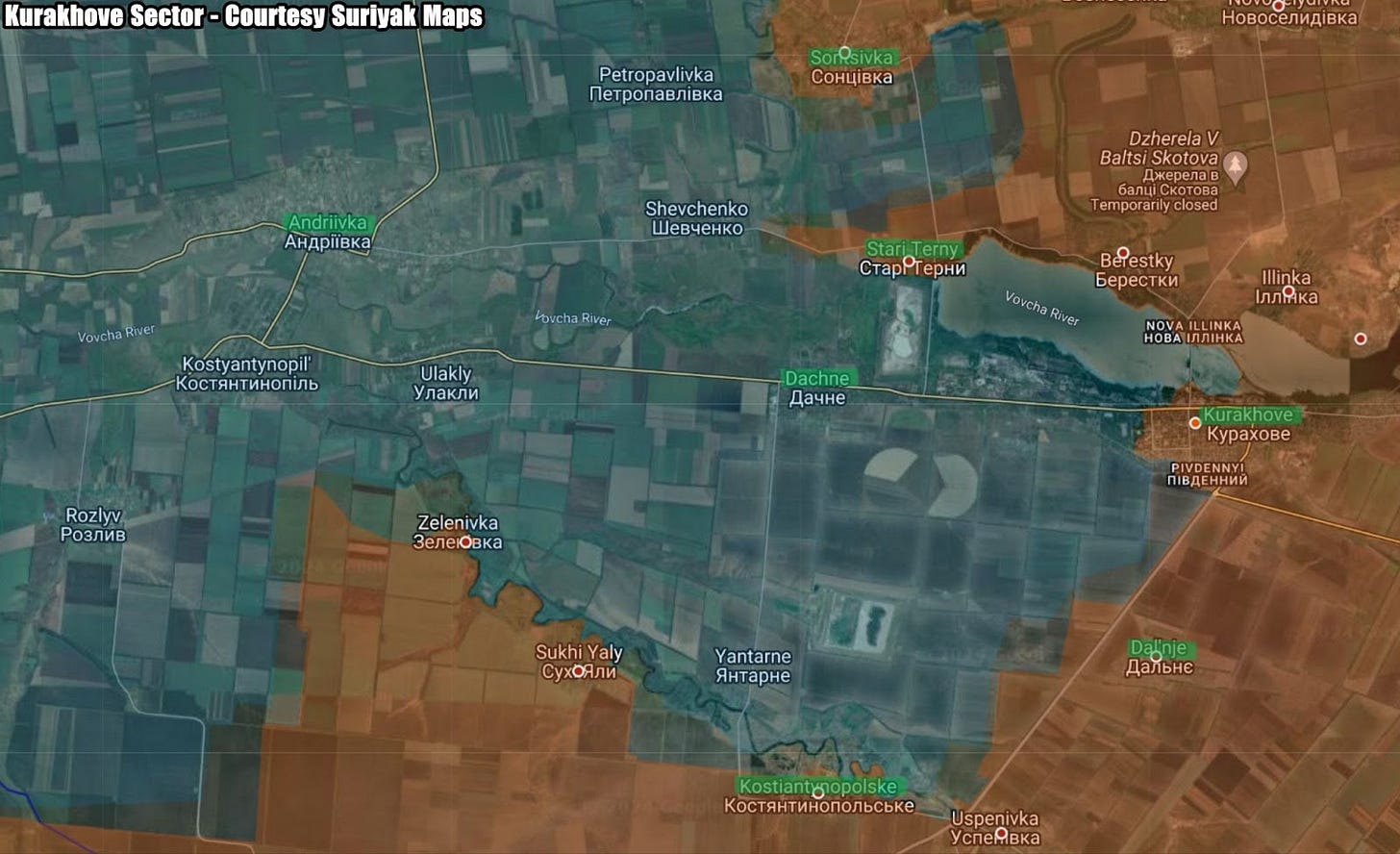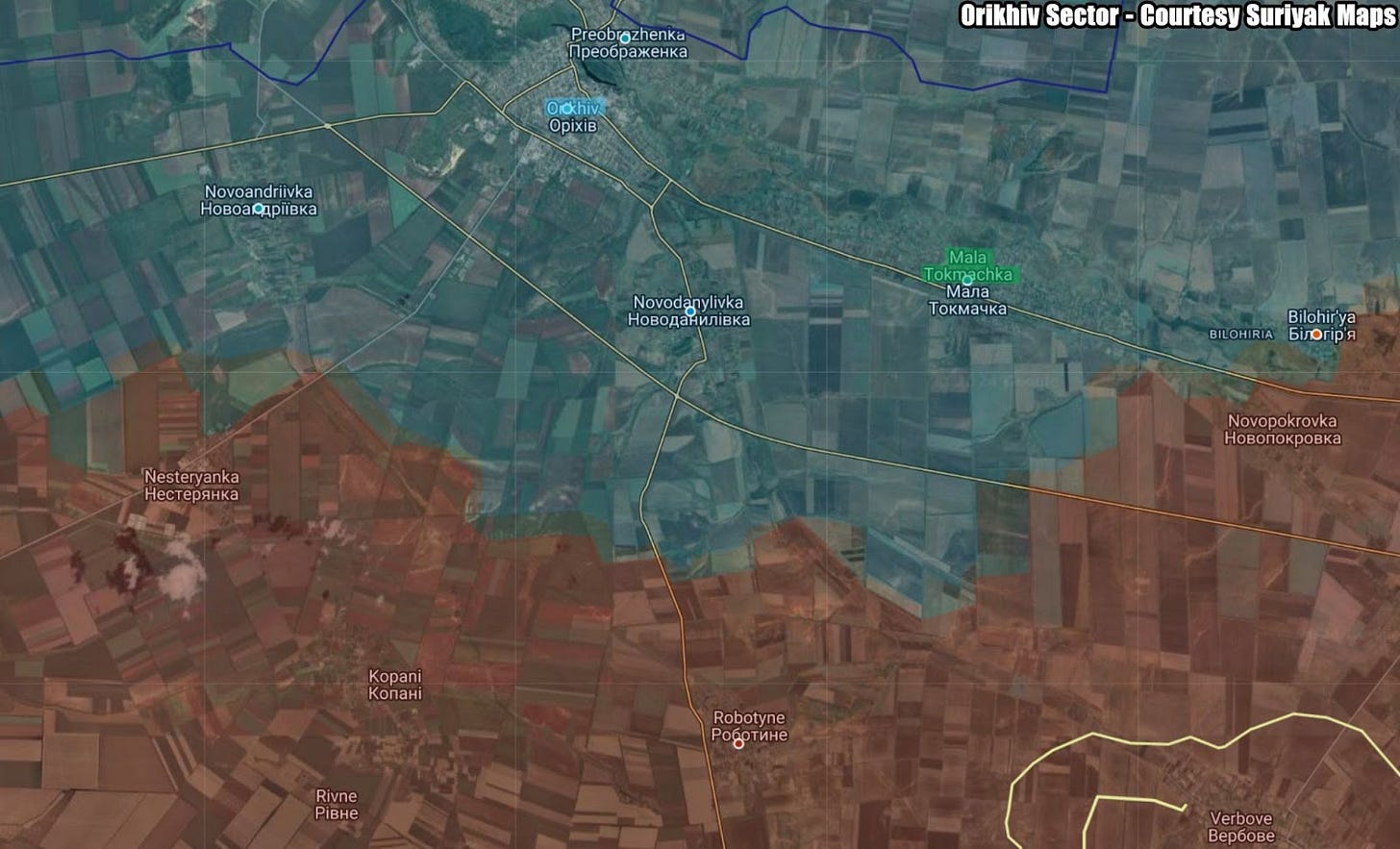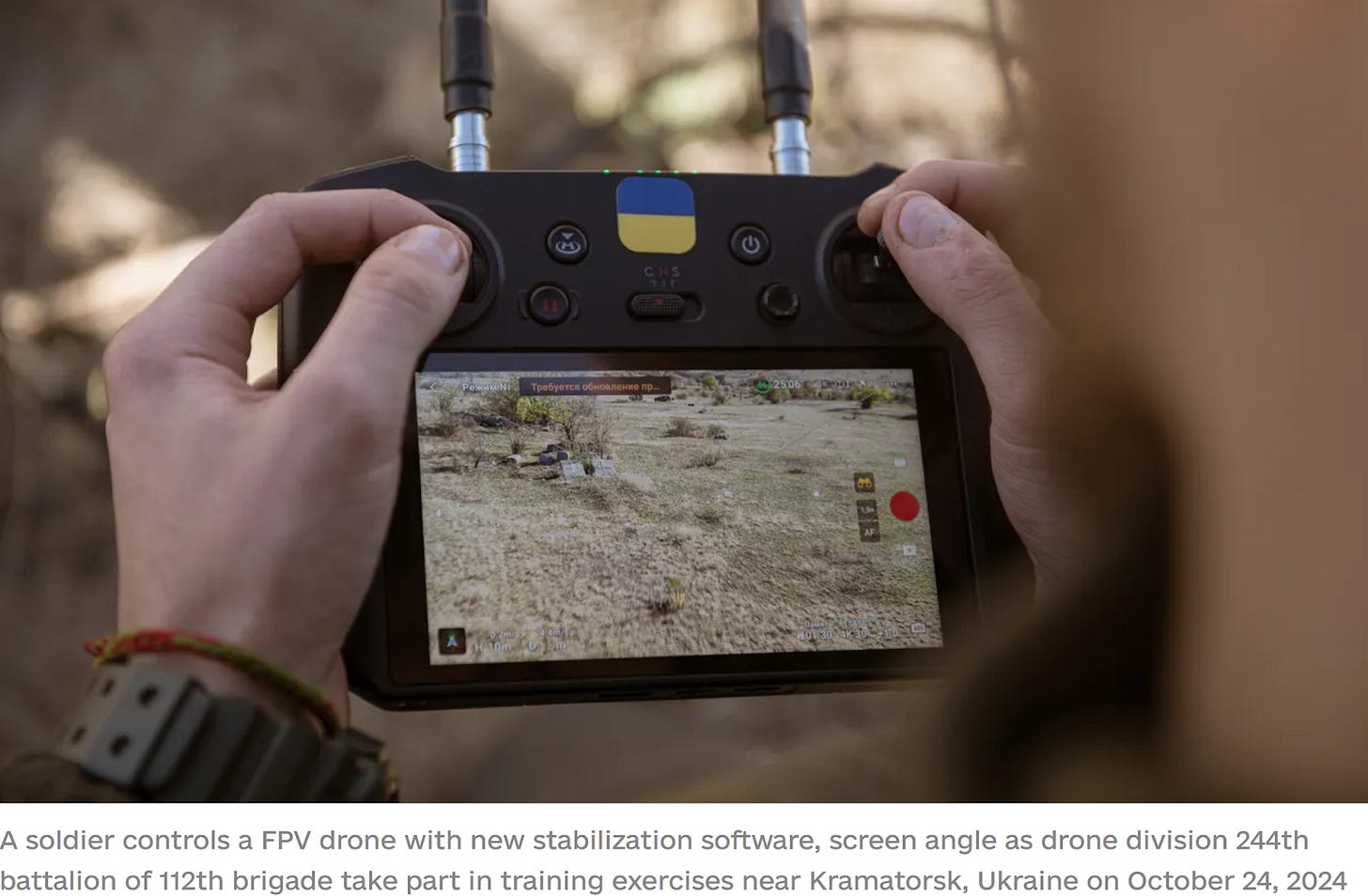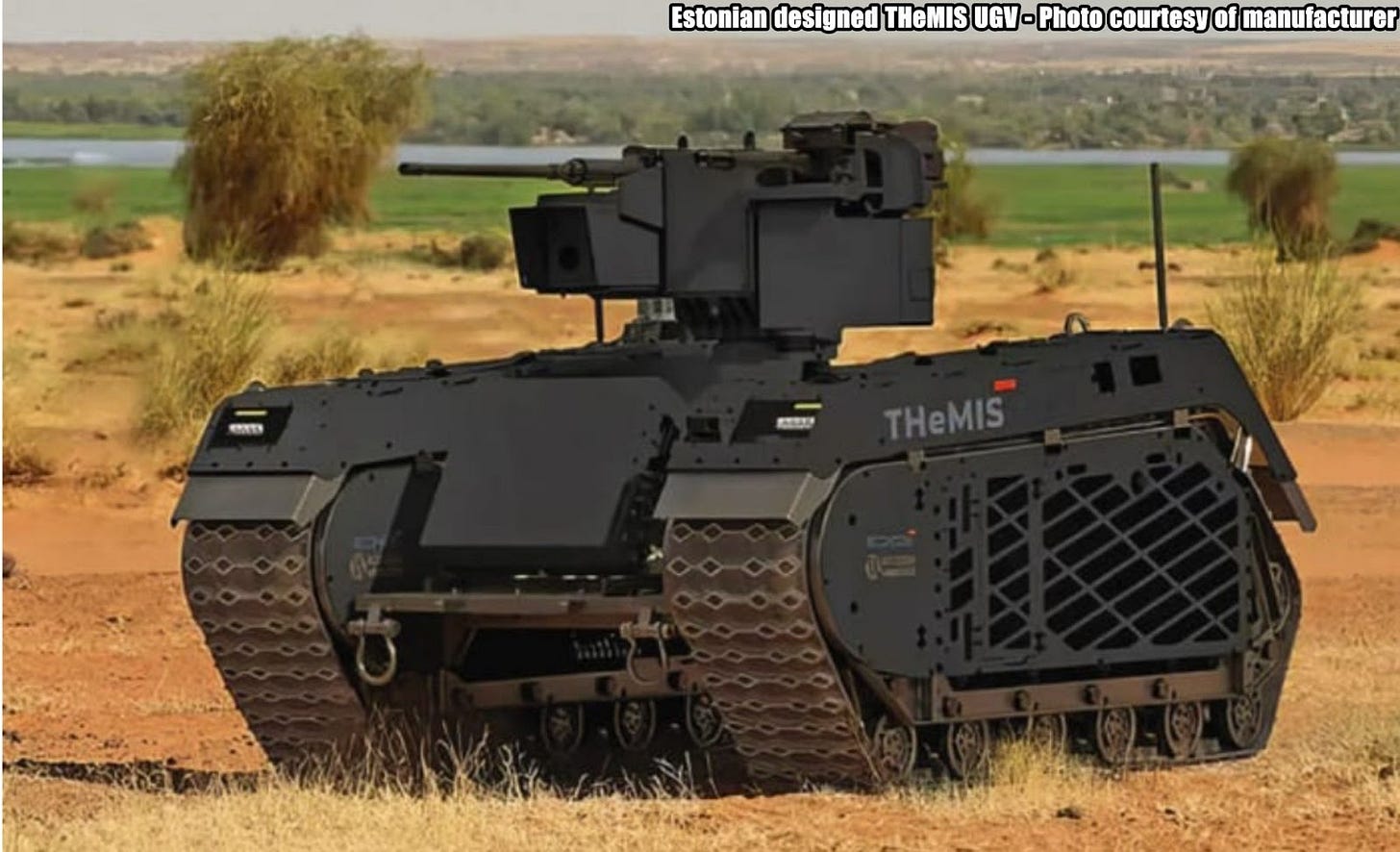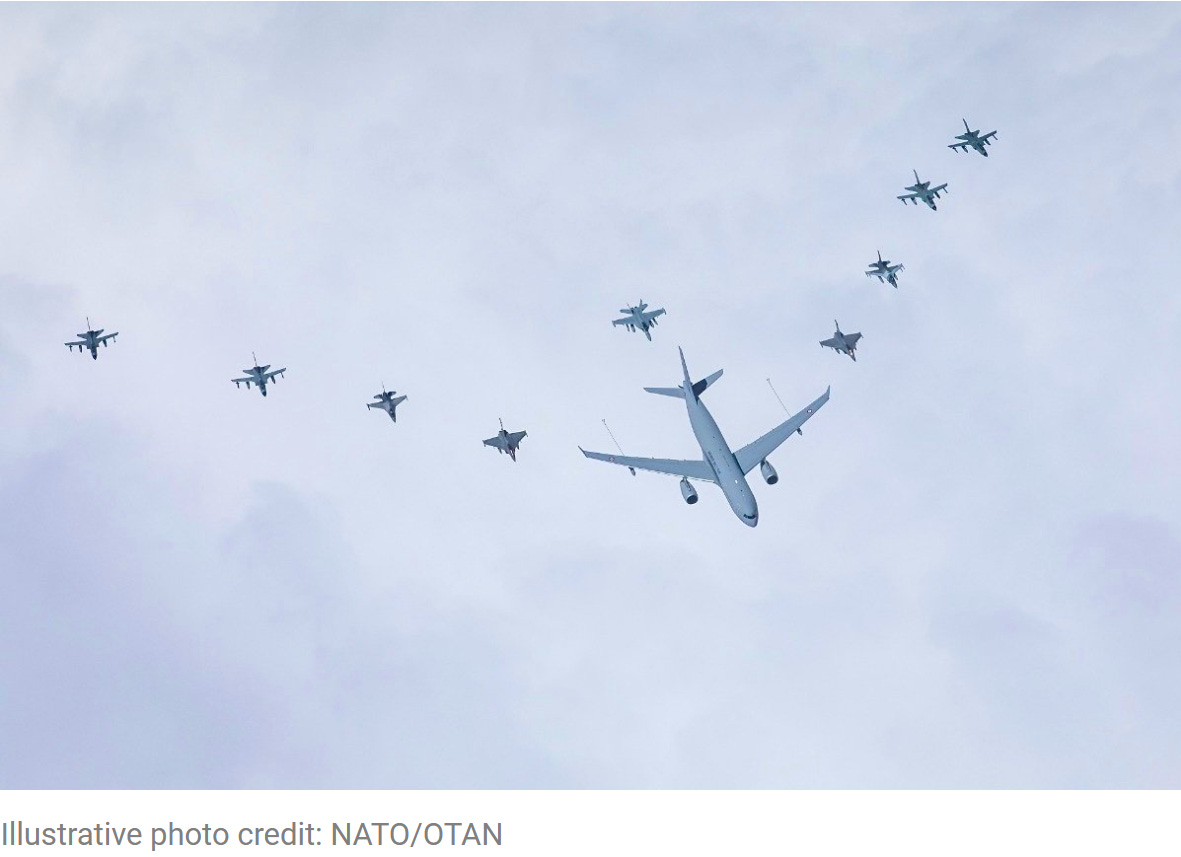I will be taking a break for the Christmas Holidays. The Brief will be published on Monday Dec 23 and will then resume Saturday Dec 28. Any major breaking news in the meantime I will post on BlueSky - You can find me here: BlueSky
Slava Ukraini! In early 2022 I began a Telegram channel aggregating news from a number of sources daily on the war in Ukraine. In June 2023 I began providing a daily draft for the Ukraine War Brief Podcast collecting news from over 70 sources daily, which formed the basis of the script. While the Podcast no longer exists I have continued to make this Brief available for my followers here on Substack for those who wish to keep up with the news from the war.
All the latest news on the Russo-Ukraine War 6 days per week
ALONG THE CONTACT LINE
GSAFU Morning Report
The General Staff of the Armed Forces of Ukraine in its Operational Information update at 22:00 on Dec 20 stated that day 1032 of the full-scale invasion of the Russian Federation against Ukraine was about to begin.
During the past day, 191 combat engagements took place. Over the past 24 hours, the enemy carried out 3 missile strikes, 32 air strikes, 730 drone strikes and more than 4,000 artillery strikes across the positions of Ukrainian forces.
At the same time, Ukrainian soldiers continue to inflict losses in manpower and equipment on the occupying troops, exhausting the enemy along the entire front line and continue to disrupt the plans of Russian occupiers to advance deeper into the territory of Ukraine.
Air Force Daily Report
57 ENEMY UAVS SHOT, 56 DRONES FAILED TO REACH THEIR TARGETS (LOCATIONALLY LOST)
➖➖➖➖➖➖➖➖➖
On the night of December 21, 2024 (from 19:00 on December 20), the enemy launched an S-400 anti-aircraft guided missile from the Donetsk Oblast TOT in the direction of Poltava Oblast (preliminarily without consequences), attacked with 113 Shahed attack UAVs and drones of other types from the directions of Bryansk, Millerovo, Orel, Kursk, Primorsko-Akhtarsk, Berdyansk.
The air attack was repelled by anti-aircraft missile troops, electronic warfare units, and mobile fire groups of the Air Force and Defense Forces of Ukraine.
As of 09:00, it was confirmed that 57 Shahed attack UAVs and drones of other types were shot down in Poltava, Sumy, Kharkiv, Kyiv, Chernihiv, Cherkasy, Zhytomyr, Khmelnytskyi, Donetsk, Dnipropetrovsk and Zaporizhia regions.
Due to the active countermeasures of the Defense Forces, 56 enemy drones were lost in location (without negative consequences).
In Zaporizhia and Kharkiv regions, downed strike UAVs damaged private and apartment buildings, property, and cars of citizens; assistance is being provided to the victims.
The Russian Border Incursion
The Russian Border Incursion
The GSAFU reported that over the previous day Defense Forces of Ukraine continued its operation in Kursk, where there were 50 combat engagements during the day. The enemy made 9 air strikes and carried out more than 400 artillery strikes.
The Institute for the Study of War (ISW), a US based think tank, in its Dec 20 Russian Offensive Campaign Assessment reported that Russian forces recently advanced within the Ukrainian salient in Kursk Oblast amid continued offensive operations on Dec 20. Geolocated footage published on December 18 shows Ukrainian forces striking alleged North Korean positions under Russian command west of Malaya Loknya (north of Sudzha), indicating that Russian forces recently advanced west of Malaya Loknya. A Russian milblogger claimed that Russian forces advanced southeast of Sudzha near Cherkasskaya Konopelka, but ISW has not observed confirmation of this claim. A Russian milblogger claimed that Ukrainian forces counterattacked near Novoivanovka and Darino (both southeast of Korenevo). Elements of the Russian 106th Airborne (VDV) Division reportedly continue operating in Kursk Oblast. A Russian milblogger claimed on December 20 that a drone crew of the Russian 34th Motorized Rifle Brigade (49th Combined Arms Army [CAA], Southern Military District [SMD]) is operating near Malaya Loknya. ISW observed reports as of December 12 that elements of the Russian 34th Motorized Rifle Brigade were operating near Velyka Novosilka and has observed reports throughout 2024 that elements of this brigade were operating in the Velyka Novosilka area.
Pentagon Spokesperson Major General Patrick Ryder stated on Dec19 that the US assesses that "several hundred" North Korean military personnel have been killed and wounded in Kursk Oblast. Ukraine's Main Military Intelligence Directorate (GUR) stated on Dec 19 that North Korean forces are operating south of Sudzha near Plekhovo, east of Sudzha near Russkaya Konopelka, and southeast of Sudzha near Ulanok and are facing rocket-propelled grenade (RPG) ammunition shortages.
The Khortytsia operational-strategic group
(Responsible for the northeastern part of Ukraine. )
Kharkiv Sector: Over the last day in this sector Ukrainian Defense Forces repelled 1 Russian attack in the area of Vovchansk.
Kupyansk Sector: Russian Forces carried out 11 offensive actions against Ukrainian defensive positions near Synkivka, Kucherivka, Petropavlivka, Zahryzove and Lozova. 1 engagement is ongoing.
Lyman Sector: Russian Forces carried out 14 offensive actions against Ukrainian defensive positions near Zelenyi Hai, Novoserhiivka, Ivanka, Terny, Yompolivka, Torske, the Serebryanskyy Forest and Hyrhorivka . 2 engagements are ongoing.
Siversk Sector: In this sector, over the last day, there has been no significant change in the combat environment.
Kramatorsk Sector: Russian Forces carried out 6 offensive actions against Ukrainian defensive positions near Chasiv Yar.
Toretsk Sector: Russian Forces carried out 11 offensive actions against Ukrainian defensive positions near Toretsk and Leonidivka. 1 engagement is ongoing.
The Tavria operational-strategic group
(Responsible for the central-eastern and southeastern part of Ukraine.)
Pokrovsk Sector : Over the last day, Russian Forces carried out 41 offensive actions against Ukrainian defensive positions mainly in the vicinity of Myrolyubivka, Promin, Lysivka, Dachenske, Zelene, Novoukrainka, Pishchane, Novovasylivka. Novoielyzavetivka, Novoolenivka and Ukrainka. 6 engagements are ongoing.
Kurakhove Sector: Russia conducted 20 offensive actions over the last day in the vicinity of Sontsivka, Stari Terny ,Andriivka, Dachne, Kurakhove Dalnje and Kostiantynopolske. 3 engagements are ongoing.
Vremivka Sector: Russian forces made 25 attempts to break through Ukrainian defences in the vicinity of Novodarivka, Novosilivka, Makarivka, Velyka Novosilka, Bahjatyr and Rozlyv. 5 engagements are ongoing.
Orikhiv Sector: Russian forces made 2 attempts to break through Ukrainian defences in the vicinity of Mala Tokmachka.
The Odesa operational-strategic group
(Responsible for Kherson, Qırım, (also known as Crimea) and the Black Sea.)
TEMPORARILY OCCUPIED TERRITORIES
Nothing major to report.
THE HOME FRONT
Over 12,000 civilians killed in Ukraine during Russia's full-scale war, UN says.
More than 12,340 civilian deaths have been recorded in Ukraine since Russia launched its full-scale invasion in February 2022, Under-Secretary-General of the United Nations Office for Disarmament Affairs (UNODA) Izumi Nakamitsu said during a U.N. Security Council meeting on Dec. 20. The Kyiv Independent reports.
The U.N. report on casualties comes as Russian President Vladimir Putin escalates threats against Ukrainian cities, including threatening on Dec. 19 to launch an Oreshnik intermediate-range ballistic missile (IRBM) against Kyiv.
The Office of the United Nations High Commissioner for Human Rights (OHCHR) recorded civilian casualties in Ukraine from Feb. 24, 2022 to Nov. 30, 2024, Nakamitsu said. Over 12,340 civilians were killed and more than 27,836 were wounded during that period.
The U.N. found that in 2024, aerial bombs and long-range weapons caused a greater number of casualties than in the previous year, Nakamitsu said.
Aerial bombs killed 341 civilians and wounded 1,803 between Jan. 1 and Nov. 30, according to data from the U.N. Human Rights Monitoring Mission in Ukraine. The figures represent a threefold increase in deaths and sixfold increase in injuries from 2023.
The OHCHR also found that 42% of Ukrainian civilian casualties in the month of November resulted from Russian attacks with long-range weapons, a "significant increase" from prior months.
Russia intensified aerial strikes against densely populated Ukrainian cities in October and November 2024. Drone strikes surged to record levels and Russia dropped at least 100 guided bombs per day nearly every day between Nov. 1-20.
Repeated attacks against residential neighborhoods in large cities, including Kharkiv, Odesa, and Sumy, led to high numbers of killed and injured victims.
Russia on Nov. 21 launched an Oreshnik missile against the city of Dnipro, supposedly as a response to the U.S. and the U.K. lifting restrictions on Ukraine's long-range strikes inside Russia.
Ukraine faces difficult decisions over acute shortage of frontline troops.
Ukraine’s Depleted army is increasingly made up of older men, but Zelenskyy is reluctant to lower mobilisation age from 25, the Guardian writes.
President Volodymyr Zelenskyy has resisted public calls from the Biden administration to lower the age at which men can be mobilised from 25, where it currently stands, to 18, citing the sensitivities of sending younger men to fight in a society that already faces a demographic crisis. But with Russia continuing to find fresh recruits for its grinding advances, the army is struggling to find enough people to fill the gaps at the front.
A series of interviews with Ukrainian officers, who spoke anonymously, given the sensitivity of the issue, paint a worrying picture for Ukraine’s war effort.
“The people we get now are not like the people who were there in the beginning of the war,” said one soldier currently serving in Ukraine’s 114th territorial defence brigade, who has been stationed in various hotspots over the past two years. “Recently, we received 90 people, but only 24 of them were ready to move to the positions. The rest were old, sick or alcoholics. A month ago, they were walking around Kyiv or Dnipro and now they are in a trench and can barely hold a weapon. Poorly trained, and poorly equipped,” he said.
Two sources in air defence units told the Guardian the deficit at the front has become so acute that the general staff has ordered already-depleted air defence units to free up more men to send to the front as infantry.
“It’s reaching a critical level where we can’t be sure that air defence can function properly,” said one of the sources, saying he had been prompted to speak out by a fear that the situation was a risk to Ukraine’s security.
“These people knew how air defence works, some had been trained in the West and had real skills, now they are sent to the front to fight, for which they have no training,” said the source.
Commanders can use the orders to send soldiers they do not like to the front, as punishment, said the source. There is also a fear that, equipped with sensitive knowledge about Ukrainian air defence positions and tactics, there is a risk of these soldiers giving up important information if they are captured by Russians at the front.
Last month Mariana Bezuhla, an outspoken and controversial MP, claimed in a post on Telegram that air defence troops were being transferred to infantry units, leading to worse success rates for Ukraine shooting down Russian drones. Yurii Ihnat, a spokesperson for the air defence forces, confirmed at the time that the transfers were taking place, saying they were “very painful”. But he denied that it was affecting shoot-down rates.
Those the Guardian spoke with said the increasing demands for transfers were making it hard to run the air defence units properly, however.
“This has been going on for a year but it’s been getting worse and worse,” said another source, an officer working on air defence. “I’m already down to less than half [of full strength]. In recent days the commission came and they want dozens more. I’m left with those aged 50-plus and injured people. It’s impossible to run things like this,” he said.
While the first months of Russia’s full-scale invasion in February 2022 saw lines of Ukrainians ready to volunteer, and hundreds of thousands of people have willingly gone to the front since, mobilisation has been a major challenge for Kyiv for the past year, with squads of recruitment officers roaming the streets and handing out call-up papers. Men of conscription age have been barred from leaving the country since the start of the invasion.
Most Ukrainians understand the need for mobilisation, but the policy is unpopular on a personal level, and the recruiting squads often face anger and abuse as they look for new conscripts.
In a telling sign of the changing attitudes in the country, a poll by the Kyiv-based Razumkov Centre over the summer found that 46% of respondents agreed that there was “no shame in evading military service”, while only 29% disagreed.
The personnel shortage has soured relations between Kyiv and Washington over recent months. Officials in the Biden administration felt irritated that Zelenskyy and other officials frequently demanded more weapons, but were unable to mobilise the requisite manpower to fill the ranks.
“Manpower is the most vital need” Ukraine has at the moment, White House national security council spokesperson Sean Savett said in a statement last month. “We’re also ready to ramp up our training capacity if they take appropriate steps to fill out their ranks,” he said.
Ukrainian officials felt the public calls by the US to lower the mobilisation age to 18 was insensitive and inappropriate. Ukraine expanded its mobilisation drive in April, lowering the call-up age to 25 from 27, but a majority of Ukrainians, even those at the front, are wary of lowering it further, citing a need to protect the younger generation.
Many soldiers say that the way to boost mobilisation rates is not by lowering the call-up age but by offering better incentives and more training. “It’s not about age, really, they need good conditions and motivation,” said the soldier from the 114th brigade. “Eighteen-year-olds are still children. Maybe they could lower it to 23 if necessary, but there are still enough people in Kyiv who could be mobilised but don’t want to go,” he added.
Russian attack on Zaporizhzhia injures 4, including child
Russia attacked the city of Zaporizhzhia the evening of Dec. 20, injuring four people, including a 12-year-old boy, regional Governor Ivan Fedorov reported. The Kyiv Independent reports.
The attack damaged a 9-story apartment building in the city, Fedorov said.
Three women and a 12-year-old boy sustained injuries in the attack. Fedorov did not disclose details about their condition.
The same night, a Russian drone attack targeted a residential building in the northeastern city of Kharkiv, also injuring a 12-year-old child.
Zaporizhzhia is a frequent target of Russian attacks. A missile strike against the city on Dec. 10 killed 10 people and injured 22. The attack also destroyed a private medical clinic and damaged several buildings.
Less than a week before that, an aerial bomb attack against the city on Dec. 6 killed 10 people and injured 24, including two children.
The Ukrainian military has been building heavy fortifications near Zaporizhzhia in preparations for a potential Russian offensive in the region.
RUSSIAN WORLD
Ukrainian Drones Crash Into High-Rise Apartment Buildings in Russia’s Kazan
A wave of Ukrainian drone attacks targeted the capital of the republic of Tatarstan early Saturday, regional authorities said, damaging several residential buildings and forcing the closure of at least two nearby airports. The Moscow Times reports.
Tatarstan regional head Rustam Minnikhanov described the attack as unprecedented in its scope and said emergency teams had evacuated residents of the impacted buildings, set up temporary shelters and provided them with hot meals.
Russia’s Defense Ministry blamed the attack on Ukraine, accusing Kyiv of deploying fixed-wing drones in three waves between 7:40 a.m. and 9:20 a.m. “Air defenses destroyed three drones, while three others were neutralized using electronic warfare systems,” the ministry said.
Kazan, located around 700 kilometers (435 miles) east of Moscow, has previously come under attack from drones. However, Saturday’s strikes mark the first time they appear to have directly targeted residential buildings in the city.
INTERNATIONAL NEWS
Trump plans to continue US military aid to Ukraine after inauguration
US president-elect’s closest foreign policy aides indicate he will continue arming Ukraine while pursuing end to war The Financial Times reported on Dec 21.
The US president-elect’s closest foreign policy aides shared his intentions in discussions with senior European officials this month, according to people familiar with the talks, as he firms up his policies towards Europe and Russia’s invasion of Ukraine.
During his White House campaign, Trump vowed to cut off aid to Ukraine, force Kyiv into immediate peace talks, and leave Nato allies undefended if they failed to spend enough on defence — spooking European capitals.
But in a boost for allies deeply concerned over their ability to support and protect Ukraine without Washington’s backing, Trump now intends to maintain US military supplies to Kyiv after his inauguration, according to three other people briefed on the discussions with western officials.
At the same time Trump is to demand Nato more than double its 2 per cent spending target — which only 23 of the alliance’s 32 members currently meet — to 5 per cent, two people briefed on the conversations said.
One person said they understood that Trump would settle for 3.5 per cent, and that he was planning to explicitly link higher defence spending and the offer of more favourable trading terms with the US. “It’s clear that we are talking about 3 per cent or more for [Nato’s June summit in] The Hague summit,” said another European official briefed on Trump’s thinking.
Nato allies are already in discussions about increasing the target to 3 per cent at that meeting of leaders in June, but many capitals are concerned about the difficult fiscal decisions that would be required to do so.
According to the White House’s office of management and budget, the US will spend about 3.1 per cent of GDP on defence in 2024. During the last year of Trump’s first presidency in 2020, Pentagon spending hit 3.4 per cent.
Key European Nato allies — including France, Germany, the UK, Italy and Poland — met Nato secretary-general Mark Rutte and Ukrainian president Volodymyr Zelenskyy in Brussels on Wednesday night to discuss how the continent would adapt defence policies in response to Trump’s return.
While Trump still believes Ukraine should never be given membership of Nato, and wants an immediate end to the conflict, the president-elect believed that supplying weapons to Kyiv after a ceasefire would ensure a “peace through strength” outcome, they added.
IMF approves $1.1 billion in funding for Ukraine
The Executive Board of the International Monetary Fund (IMF) approved the disbursement of $1.1 billion in funds for Ukraine via the Extended Fund Facility (EFF), the IMF announced on Dec. 20. The Kyiv Independent reported.
The funds represent the latest tranche of the EFF program, which will provide Kyiv with $15.6 billion in budget support over four years.
The IMF approved the $1.1 billion tranche after completing its sixth review of the EFF agreement.
"Russia's war in Ukraine continues to take a devastating social and economic toll on Ukraine," IMF Managing Director Kristalina Georgieva said in a press statement.
"Despite the war, macroeconomic stability is being preserved through skillful policymaking by the Ukrainian authorities as well as substantial external support. ... The financial sector remains stable, but vigilance is needed given heightened risks."
The IMF said Ukraine showed "better than expected resilience" to attacks on the energy sector, leading to greater economic growth in 2024 than previously forecasted. The agency predicts an economic slowdown in 2025 due to infrastructure attacks, pressures on the labor market, rising inflation, and the uncertainties of war.
Funds from the EFF are intended to help stabilize Ukraine, support the country's postwar recovery, and promote economic growth as Kyiv moves forward on its path to EU membership.
Including the latest round of funding, the IMF has already disbursed $9.8 billion in budget support for Ukraine via the EFF.
External financing is critical for Ukraine as it faces mounting economic pressure from Russia's full-scale invasion. Kyiv received $42.5 billion in foreign aid last year, and the Finance Ministry has said that the amount needs to increase by at least $12 billion for 2025.
MILITARY & TECH
Ukraine reportedly conducted the war’s first unmanned ground assault on Russian positions
The Institute for the Study of War (ISW), a US based think tank, in its Dec 20 Russian Offensive Campaign Assessment reported that Ukrainian forces reportedly conducted their first attack solely using unmanned ground vehicles (UGVs) and first-person view (FPV) drones, highlighting Ukraine's ongoing efforts to leverage technological innovation into ground operations. The spokesperson of a Ukrainian brigade operating in the Kharkiv direction reported on Dec 20 that Ukrainian forces conducted their first ground attack exclusively using robotic systems instead of infantry on an unspecified date near Lyptsi (north of Kharkiv City) and successfully destroyed unspecified Russian positions during the attack. The spokesperson stated that Ukrainian forces conducted the attack with dozens of UGVs equipped with machine guns and also used the UGVs to lay and clear mines in unspecified positions in the area. Ukrainian officials have repeatedly highlighted Ukraine's efforts to utilize technological innovations and asymmetric strike capabilities to offset Ukraine's manpower limitations in contrast with Russia's willingness to accept unsustainable casualty rates for marginal territorial gains.
Ukraine also continues to innovate aerial drone production. The Ukrainian General Staff reported that Ukrainian officials completed tests of a drone attached to fiber optic cables that will be more resistant to electronic warfare (EW) interference. Russian forces have recently fielded such drones in Kursk Oblast and Ukraine. A Ukrainian drone company reported that it recently assembled a prototype of the first FPV drone made exclusively from components manufactured in Ukraine.
Meanwhile Russian military losses in its full-scale invasion of Ukraine have exceeded 750,000 Russian soldiers, and are expected to surpass 1 million Russian troops within six months, U.K. Under-Secretary of Defense Luke Pollard said on Dec. 19.
"It is highly likely that they have sustained significant combat casualties, whilst only achieving limited tactical gains," Pollard told British parliamentarians on Dec. 19.
Russia has gained ground in eastern Ukraine and Kursk Oblast in recent months but at the cost of heavy casualties.
Grumpy Here - Technological developments like this and more are very important to Ukraine's ability to continue in this war. As can be seen in the article from the Guardian posted above in this same issue. Ukraine has an extreme shortage of manpower at the front.
It should be noted that while these unmanned weapons systems can be very effective, both offensively and defensively, They can not be seen as a replacement for boots on the ground. Infantry men - grunts still need to clear that trench, treeline, hard point. Integrating these new systems into existing infantry units will make both more effective.
How Realistic Is It For NATO To Comply With Trump's Defense Spending Demands?
Defense spending for NATO member states is sometimes a sensitive topic: despite the agreement to allocate at least 2% of their GDP, not all Alliance countries have complied with this norm to date; regardless of that, Western media report that the newly elected U.S. President Donald Trump will demand from other NATO members a significant increase in defense spending, up to 5%. Defense Express analyzes the likelihood of this occurring.
However, the Financial Times notes with reference to its own sources, that, at first, a lower minimum will be required, around 3.5% of GDP, which sounds like a more realistic figure as of today. Sources also say the topic will be raised again at The Hague's NATO summit next year scheduled for June 2025.
In general, this is not the first time that Trump has spoken about military spending in the context of NATO and has repeatedly threatened that the United States may withdraw from the Alliance should other countries ignore the demand to increase their defense commitments.
Amongst all this, the question arises as to how realistic it is to meet the requirement to set aside at least 3.5% of GDP for defense in a short-term perspective, given that not all members have yet surpassed the minimum threshold of 2%, according to the official NATO statistics as of June 2024. Here is the bird's eye view of the current situation:
By 2024, nations such as Spain, Slovakia, Luxembourg, Belgium, Canada, Italy, Portugal, and Croatia have not committed to allocating the target 2% which, for a reminder, was agreed on back in 2014. Moreover, most of them, except for Luxembourg, have made little progress in trying to reach the threshold over the past decade.
Next comes a list of countries that have exceeded the 2% mark, with more than half of them showing a remarkable increase in defense spending compared to the starting point ten years ago.
Among the top five relative to percentages of GDP are Baltic countries Estonia and Latvia (we should also credit Lithuania, the sixth from the top). As of 2024, these have shown significant growth and are currently at 3.43% and 3.15%, respectively. We should also single out Greece, which spent over 2% in 2014 already yet reached 3.08% by 2024.
Meanwhile, the United States itself, which is the initiator of the said increase in defense spending, is one of two states in this rating to demonstrate not a positive dynamic but a drop in expenditure relative to GDP percentage compared to 2014: from over 3.5% in 2012 down to 3.43% nowadays. Although we must remember that this indicator was on the rise during Trump's first presidency.
Perhaps the biggest leap and the top-1 figures are demonstrated by Poland, currently the closest to the 5% indicator, allocating 4.12% of GDP to defense today, with plans to break the historically record-high military budget with $42 billion or 4.7% of GDP committed for 2025.
Returning to Trump's stated requirement of 3.5%, still prone to debate, Defense Express can make a cautious assumption that only some of the Alliance countries will be able to reach the threshold in the short term; and if we talk 5%, even for those it would be extremely difficult. Such a drastic step would require both the political will of particularly reluctant countries and significant financial injections into defense budgets.
That’s it for today’s Brief folks if you would like to keep up with events in Ukraine daily please consider subscribing.
Feel free to share this update with your friends. Heroyam Slava!






